Direction (1 – 5): Pie chart given below shows distribution (in degree and in absolute value) of savings of five persons (P, Q, R, S & T) and bar graph shows percentage of expenditure of these five persons. Read the data carefully and answer the questions.
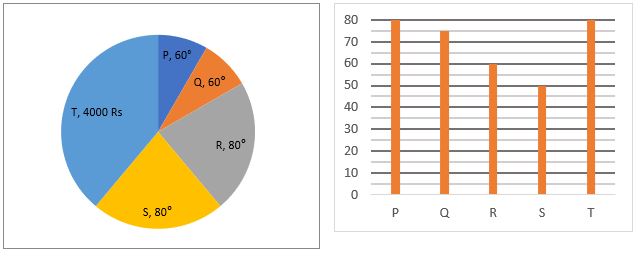
Note – Total income of any person = Total (saving + expenditure) of that person.
Q1. Find ratio of income of P to that of T?
(a) 3 : 2
(b) 2 : 3
(c) 3 : 5
(d) 4 : 3
(e) 3 : 4
Q2. Total expenditure of Q is what percent more than that of R?
(a) 40%
(b) 50%
(c) 55%
(d) 30%
(e) 48%
Q3. Find average income of R & S?
(a) 10000 Rs.
(b) 8000 Rs.
(c) 9000 Rs.
(d) 7000 Rs.
(e) 5000 Rs.
Q4. If income of A is 140% more than that of R and saving of A is 100% more than that of S, then find expenditure percentage of A?
(a) 72 ⅓%
(b) 60 ⅓%
(c) 33 ⅓%
(d) 66 ⅔%
(e) 66 ⅓%
Q5. Income of Q is what percent less than that of P?
(a) 10%
(b) 22.5%
(c) 30%
(d) 25%
(e) 20%
Directions (6-10): What approximate value will come in place of question mark (?) in the given questions: (You are not expected to calculate the exact value.)
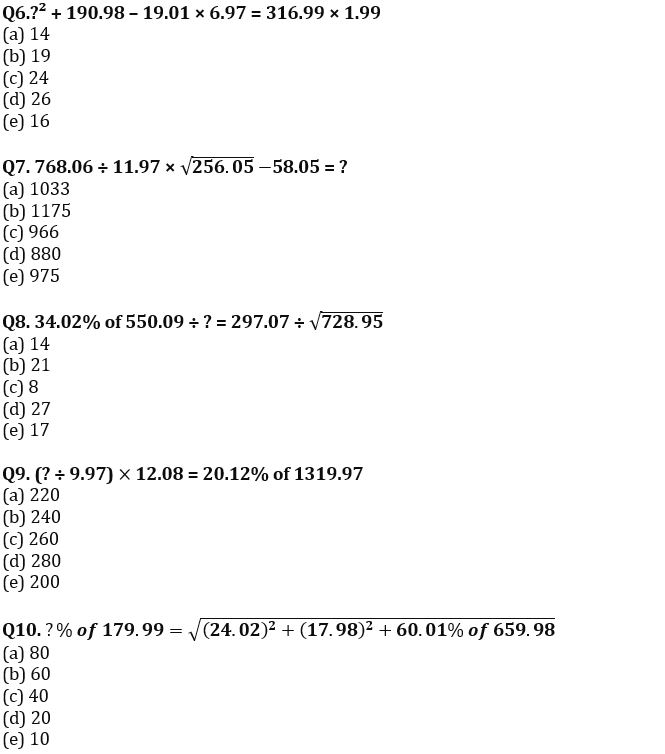
Q11. Two dices are rolled simultaneously. Then, find probability that sum of numbers appearing on both dices is a multiple of 3.
(a) 1/9
(b) 1/12
(c) 1/4
(d) 1/3
(e) 1/6
Q12. Anurag can cover a km in 10 minutes and Dharam can cover a km in 15 minutes. If they both participated in a race and Anurag defeated Dharam by 200m, then find the length of race.
(a) 500m
(b) 600m
(c) 800m
(d) 400m
(e) 300m
Q13. Cost price of 10 articles is equal to marked price of 8 articles and when shopkeeper sells an article at 20% discount then he earns Rs.48 less than the amount he earned when he sells an article at 12% discount. Find cost price of the article.
(a) Rs.560
(b) Rs.540
(c) Rs.420
(d) Rs.480
(e) Rs.500
Q14. Ramesh purchased 4kg rice & 5 kg wheat for Rs.180 and Suresh purchased 2kg rice & 15kg wheat for Rs.290. Then, find per kg price of wheat is what percent of per kg price of rice?
(a) 64%
(b) 90%
(c) 75%
(d) 82%
(e) 60%
Q15. A spherical ball is melted to form 63 identical cylindrical vessels. If radius of each cylindrical vessel is 33⅓% of radius of spherical ball and height of each cylindrical vessel is 3cm less than radius of each cylindrical vessel, then find radius of spherical ball.
(a) 21cm
(b) 14cm
(c) 35cm
(d) 49cm
(e) 42cm
Solutions
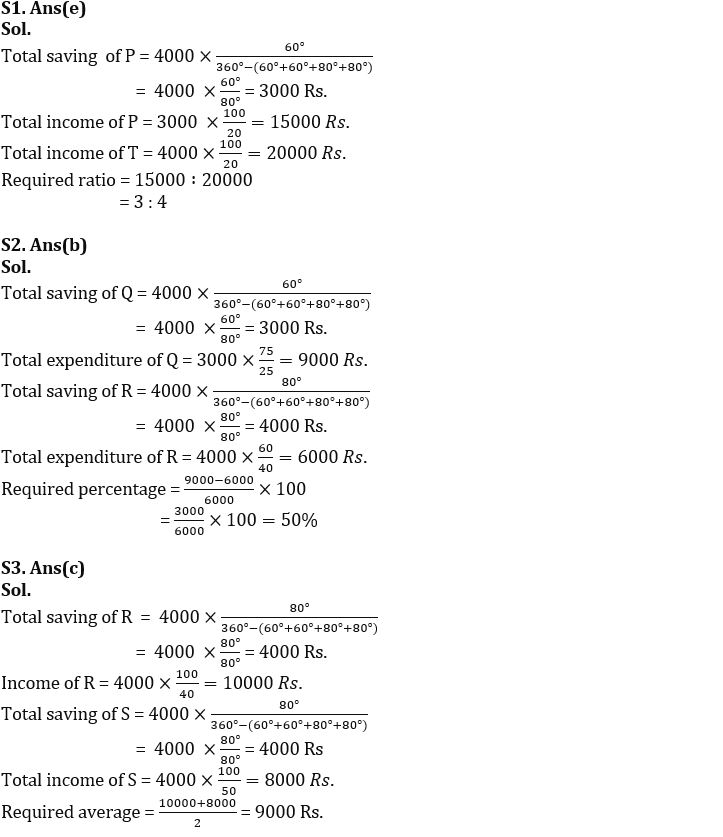
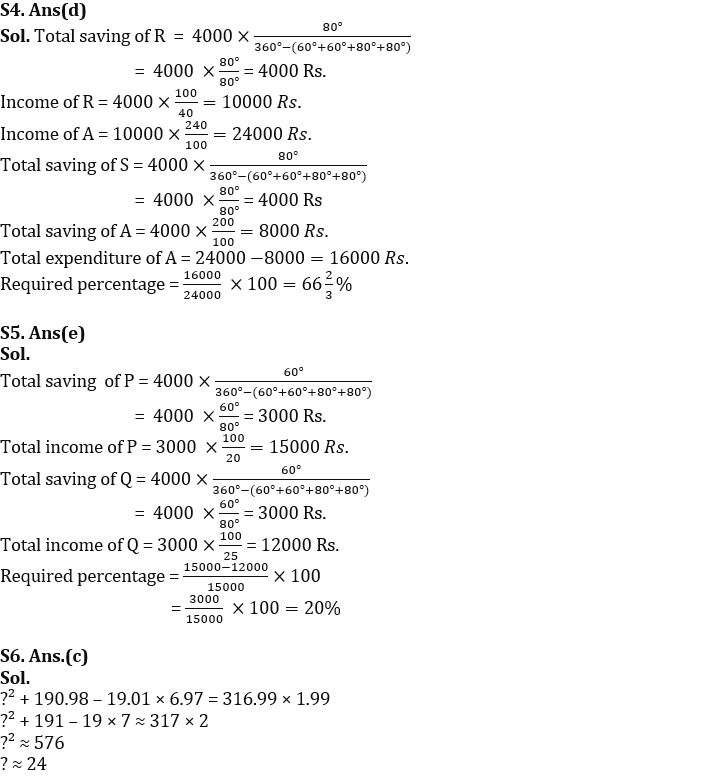
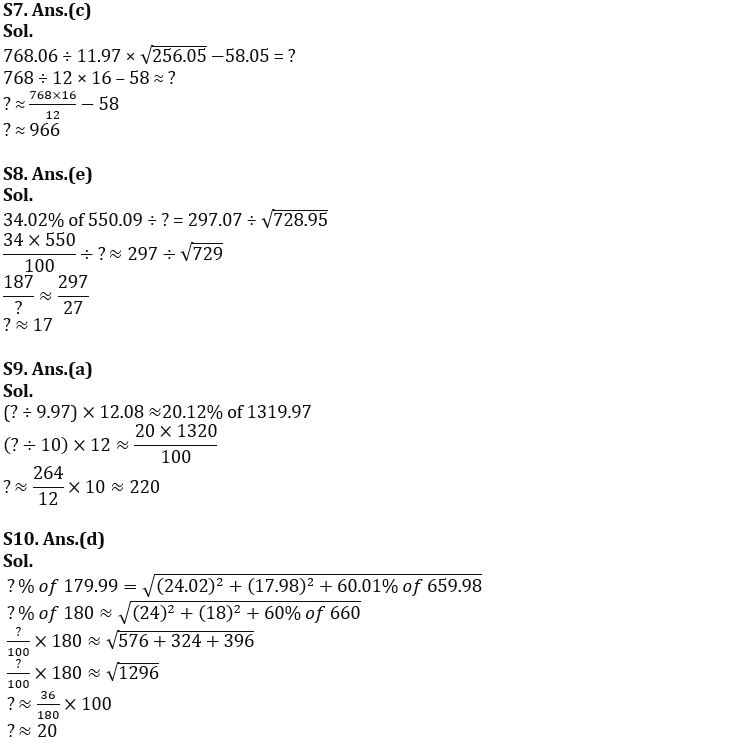
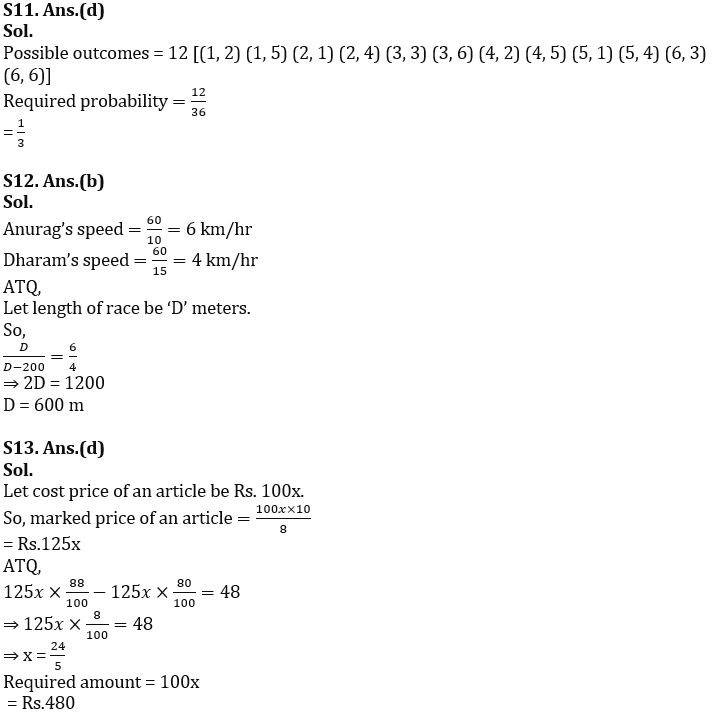
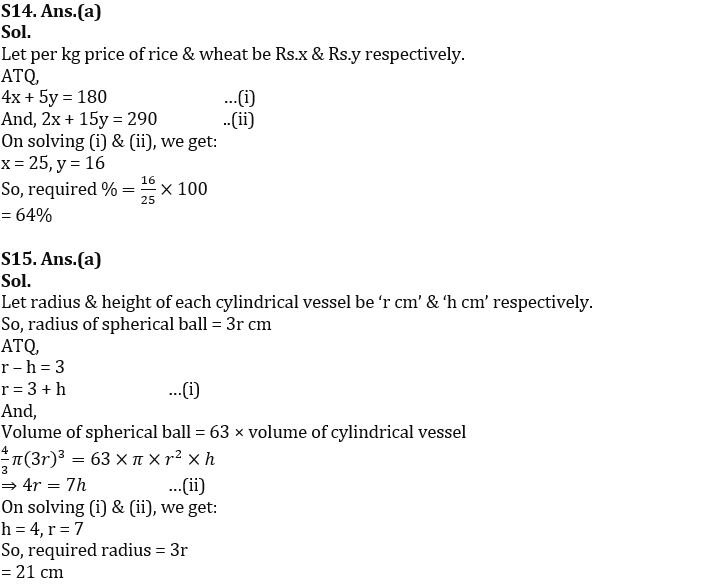





 Quantitative Aptitude Quiz For Bank Main...
Quantitative Aptitude Quiz For Bank Main...
 Quantitative Aptitude Quiz For Bank Foun...
Quantitative Aptitude Quiz For Bank Foun...




